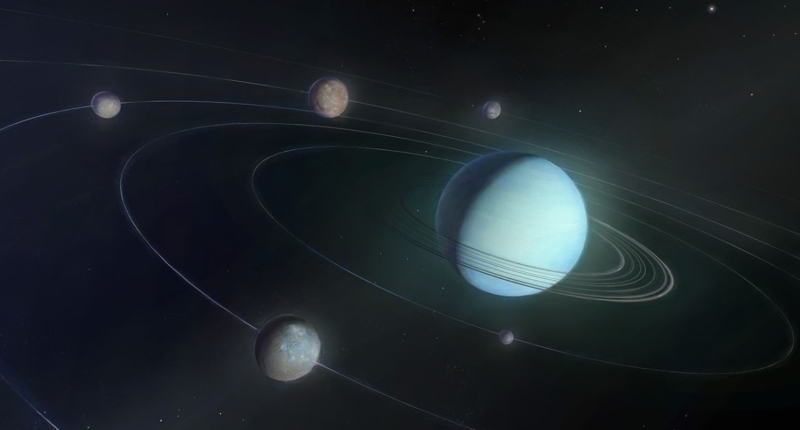Recent research suggests that two of Uranus’ moons, Ariel and Miranda, may possess liquid oceans beneath their frozen surfaces that are actively blasting plumes of material into space. The findings are an extension of previous Voyager 2 flyby observations, which showed that Uranus’ five largest satellites could have subsurface oceans. The mechanism by which Miranda and Ariel are responsible for the plasma particles being added into the Uranus system is currently unknown, but researchers suggest it could be due to the moons possessing an active ocean beneath their surface. The trapped particles come from at least one of Uranus’ moons, specifically Ariel and/or Miranda being the leading suspects. More research would be required to confirm these findings, but this study could provide vital insights for future space exploration missions to the moon subsurface oceans.
Active Subsurface Oceans May Exist on Two of Uranus’ Moons
Recent findings suggest that Uranus’ two moons, Ariel and Miranda, possess liquid oceans beneath their frozen surface that are actively blasting plumes of material into space. These two icy moons may be contributing to material being pumped into space, which was discovered almost 40 years ago by NASA’s Voyager 2 spacecraft. The radiation data collected by Voyager 2 showed that Uranus’ five largest satellites could have subsurface oceans.
The study is an extension of previous Voyager 2 flyby observations, which suggested that Uranus’ five largest satellites could have subsurface oceans. The mechanism by which Miranda and Ariel are responsible for the plasma particles being added into the Uranus system is currently unknown. However, researchers suggest that the moons possessing an active ocean beneath their surface could be the reason.
Researchers have studied data from Voyager 2 and ruled out other possible explanations for the unusual data feature. The trapped particles are believed to come from at least one of Uranus’ moons, specifically Ariel and/or Miranda being the leading suspects. Further research is required to confirm these findings. However, this study could provide vital insights for future space exploration missions to the moon subsurface oceans.
Don’t miss interesting posts on Famousbio
